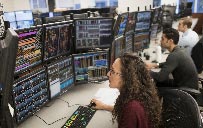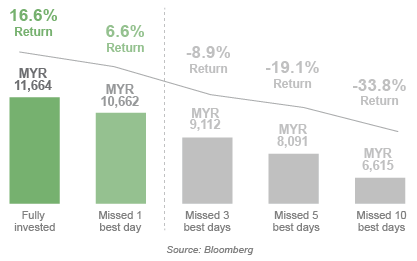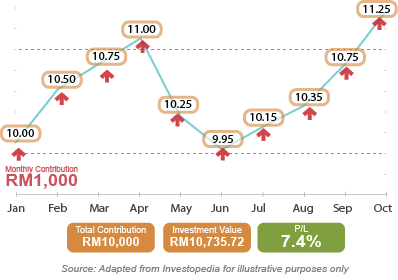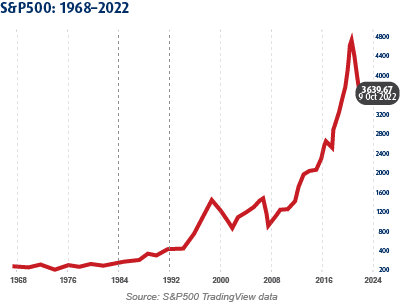No investor can consistently time the market.
When markets are
volatile, stock prices change very quickly. People swing between fear and
greed as they try to predict when markets will provide the bullish gains
they're hoping for.
Time for a fresh take: Market conditions, generally represented by bull
and bear markets, are unpredictable. It takes patience to monitor the
markets. If you're as good as the best investment banks, you might stand
a chance. Otherwise, time in the market beats timing the market. Read on,
and we'll show you why.
Timing the market:
How hard can it be?
Timing the market simply means predicting market movements to
make a profit. Also known as active investing, it is the opposite strategy of
buying and holding an asset for the long-term. It is very difficult to do
consistently. Most professionals would advise against this approach.
Even then, some believe they can do what investors like Dr. Michael J.
Burry did — he made billions by timing and shorting the US housing
market. However, they don’t tell you that he had to hang on as his losses
kept growing before it finally paid off. He almost lost his investors, his
investment firm and his reputation.
It can turn investors into
emotional trainwrecks

Markets are open and moving
somewhere around the world, day or
night. Fund managers have global
research departments, analysts and
information that isn’t readily
available to the general public. It’s
hard to compete with these experts.
Trying to do all of this by yourself can be an emotional roller coaster –
the perfect recipe for a personal financial disaster, or worse, a nervous
breakdown. Remember, even the experts have to constantly adjust their
holdings to make a decent profit over time.
“Actively-managed funds generally
fail to survive and beat their
average passive peer
over longer time horizons.”
Source: Morningstar Semi-Annual Active/Passive Barometer report
Spending time in the market:
Does it really work?
The chart below shows the difference between remaining fully invested
vs trying to time the market and possibly missing the best trading days.
From over 200 trading days in a year (for regular markets that operate
Monday to Friday), you don’t have to miss much to lose big. The chart
below is based on investing RM10,000 in the S&P500 in 2020.

Missing only the 10 best trading days in one year means you would have
lost a whopping 33.8% of your capital!
Morningstar's semi-annual active/passive barometer report indicates
that only 26% of all active funds topped the average of their passive rivals
over a 10-year period ended December 2021. Long-term success rates were
generally higher among foreign-stock, real estate, and bond funds.
“The reality is,
it’s time in the market,
not timing the market.”
Bank of America Vice Chairman Keith Banks
Time is an investor’s
best advantage
A simple and effective long-term strategy is Dollar Cost Averaging
(DCA): by consistently investing in a fund, your average cost gets lower and
you generate greater gains on investments over time. This can be done on
a weekly, monthly or quarterly basis, it’s up to you. You can also buy the
‘dips’ or temporary downturns (also known as BTD or its rude sibling
‘BTFD’).
Dollar Cost Averaging is an investment decision example that shines
during falling markets, as investors tend to gain more over time. It also
gives you the peace of mind that you won’t make counterproductive
investment decisions driven by greed, fear or hope. A simple calculation,
just over one year, provides proof – as in the chart below:
Dollar Cost Averaging:
Investing RM1,000 monthly over 10 months:

Source: Adapted from Investopedia for illustrative purposes only
Given all the evidence in this article, a large portion of your holdings
should be aiming to make a good profit over a long-term horizon. What’s
important is that you see the bigger picture and not be swayed
by the volatility and noise.
Always remember; zoom out and see the larger picture:
A wider view gives you better perspective. Historically, bull markets
with rising prices tend to last longer than bear markets with falling prices.
Below, the S&P500 chart illustrates this point; giving you a view of the
market all the way back from the 60’s. In perspective, over the long term,
it has grown more than it has fallen. This should provide you with some
perspective when looking at the current dip.
S&P500: 1968-2022

Time to start: How you
can invest easily
With all our HLB funds, you can always choose to invest a lump-sum, or
choose something like a monthly or quarterly schedule. Your financial
advisor can help you with this.
While the market may stay volatile for a while, it can be skewed in
your favour — as long as you remain level-headed and aware of the
long-term trend. The latest trending news, opinions and personal agendas
that might flood your inbox are really no match for the calm and smart
investor who’s giving the markets time to deliver.
This article is part of Hong Leong Bank’s educational series, called ‘Fresh Take’.
Here, we seek to present you a fresh, unbiased perspective of all matters financial.
We’ll be uploading more educational content moving forward, so do watch out for
the next piece.
In a world that’s awash with information that may be either true, false or
anywhere in between, Fresh Take aims to cut through the clutter, and help you on
your journey as an investor who’s seeking to build a strong financial future.
Please reach out if you need to know more,
or need personalised help
